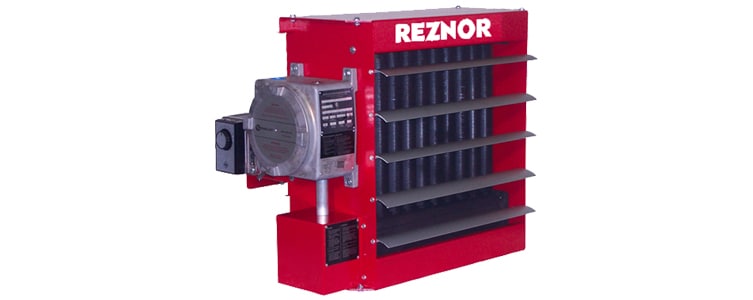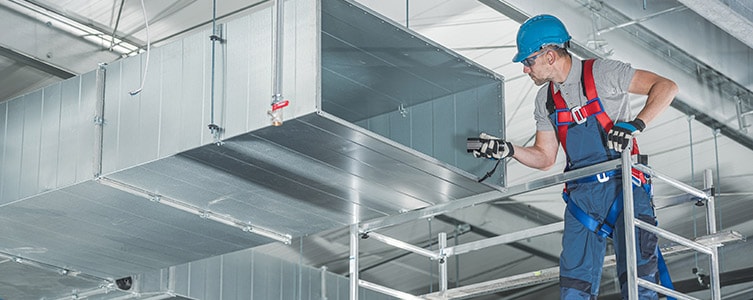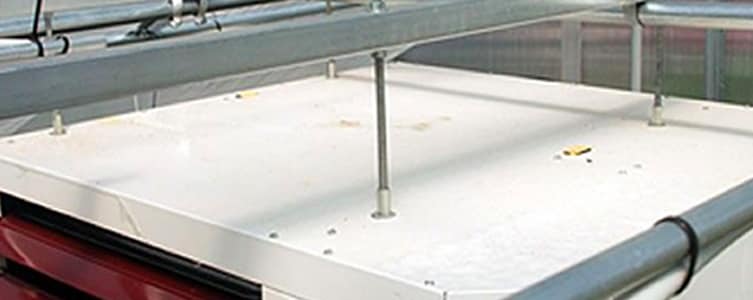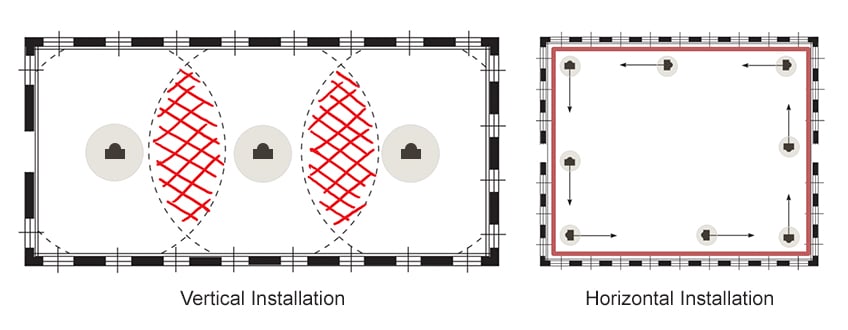
How to Heat a Warehouse
Keeping your warehouse employees warm can be tricky. Besides the incredibly large volume of space that needs heating, there’s the matter of warehouse doors that are constantly opening and shutting to send and receive shipments.
The challenges associated with finding a warehouse heater are shared with airplane hangars, big box stores, factories, and other large commercial and industrial applications.
Without a doubt, the best way to heat a warehouse or other commercial space is with unit heaters. If you haven’t read our unit heater buying guide, please do so for an overview of how they work and the different types of heaters available.
Below, we’ll discuss how to heat a warehouse and the specific benefits of using warehouse unit heaters.
Warehouse Heating Challenges
According to OSHA, the recommended temperature in a workplace is between 68-76° F. When it’s too cold, employees’ main concern becomes staying warm, which may significantly hamper their productivity.

In the deadline-sensitive environment of a warehouse, lapses in productivity can translate into shipping delays, angry customers, and canceled orders. In factories, it can mean missing daily production quotas.
But keeping employees comfortable in such large areas is much more complicated than in a small office. It takes significantly more heat that must somehow be evenly spread across the entire floor. Produce too little heat and you’ll have cold spots. Produce too much, and you’ll be wasting energy, which isn’t cheap at that scale.
Some warehouse managers opt for portable propane heaters placed randomly throughout the floor. Not only does this result in uneven heat distribution, but it requires regular replacement of fuel. Portable heaters can also malfunction and release toxic fumes into the workplace. Talk about a liability nightmare.
Underfloor radiant heating is another option. It’s a solid choice from a heating and comfort perspective, but if you have an existing building, you would need to rip up the entire concrete floor—not exactly a cost-effective endeavor.
Only warehouse unit heaters provide the heating comfort, ease-of-installation, and safety that will help keep your team productive.
Choosing a Warehouse Heater
Our unit heater buyer’s guide overviews the main factors to consider when selecting a unit heater. One of these is fuel type. Unit heaters come mainly in natural gas, liquid propane, hydronic, and electric models. Choosing a fuel type should come down to the most economical option in your area.

Next is sizing. Sizing unit heaters for commercial or industrial applications can be very complex and requires a professional Manual J load calculation. Your sizing professional will take multiple factors into account such as square footage, desired temperature, heat throw, local climate, etc.
There are a few other considerations that are particularly crucial in selecting commercial unit heaters, namely, ventilation type, durability, and installation.
Ventilation
Many commercial and industrial applications release chemicals, dust, and other pollutants into the indoor air. If that’s the case for you, then you’ll need separated combustion venting for your warehouse heater (this obviously doesn’t apply for electric-powered heaters).

Unlike standard vented units, which draw their intake air from the surrounding room, separated combustion heaters have a dedicated pipe that brings in fresh air from the outdoors. This protects the unit heater from drawing in harmful indoor pollutants, which could damage the unit or create a safety risk.
If indoor air quality isn’t an issue in your building, then you can opt for traditional venting and save on piping.
Durability
Commercial environments can be rough. In hazardous locations where flammable materials are commonplace, such as refineries, chemical storage facilities, grain elevators, and sewage treatment plants, you should opt for explosion resistant electric unit heaters.

Explosion resistant heaters seal electrical components from the outside environment and shield any moving parts. In addition, many offer freeze and high-temperature protection to ensure functionality and safety in harsh conditions.
For humid and highly corrosive environments, we recommend wash down electric unit heaters, which are designed to withstand increased moisture and resist corrosion.
You should also consider heat exchanger durability. For commercial applications, especially those with corrosive chemical fumes or excessive moisture, we recommend having a stainless-steel heat exchanger in your unit heater.
Installation
Unlike residential unit heater applications, which typically only require one heater, your facility will likely require several. How and where you install them matters.

If you have low ceilings and limited obstructions, then a horizontal unit heater installation makes sense. In this orientation, the unit heaters are installed around the entire perimeter of the facility facing horizontally, especially near windows and overhead doors. The point is to cover every potential point of heat loss.
For narrow buildings, buildings with high ceilings, or buildings with many racks or obstructions, a vertical unit heater installation is best. The units are installed in the building’s center pointing straight down and arranged so that their heat zones overlap.
Your installer will recommend whether a horizontal or vertical installation is best for your application as well as offer different mounting options from which to choose.
Stay Warm, Stay Efficient
Installing the right-sized warehouse heater will help you maintain labor efficiency into the cold winter months. Warm employees are happy employees so never skimp on indoor comfort.
If you have any questions about selecting commercial unit heaters, our product experts are happy to steer you in the right direction. Please contact us for more information.





